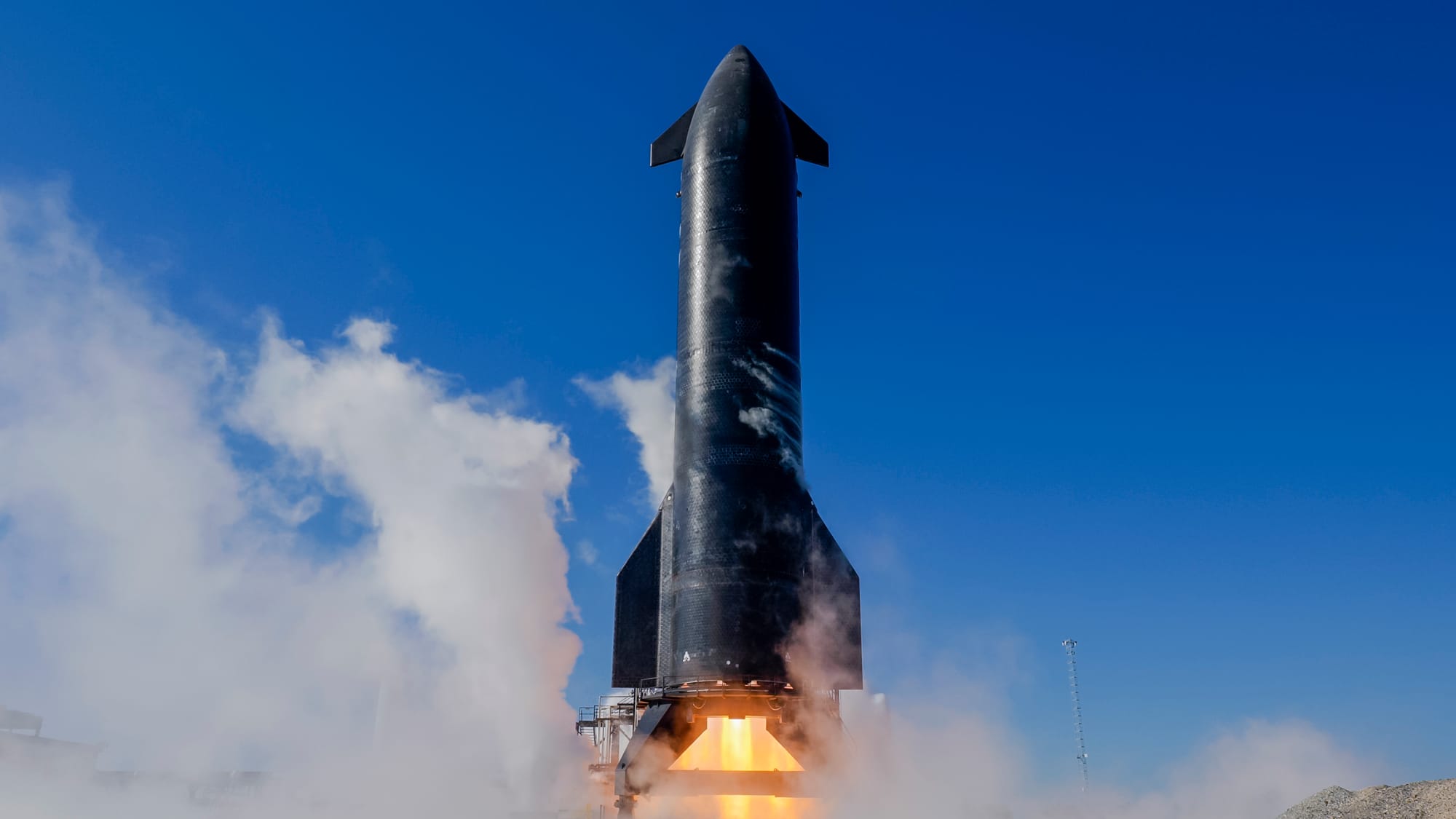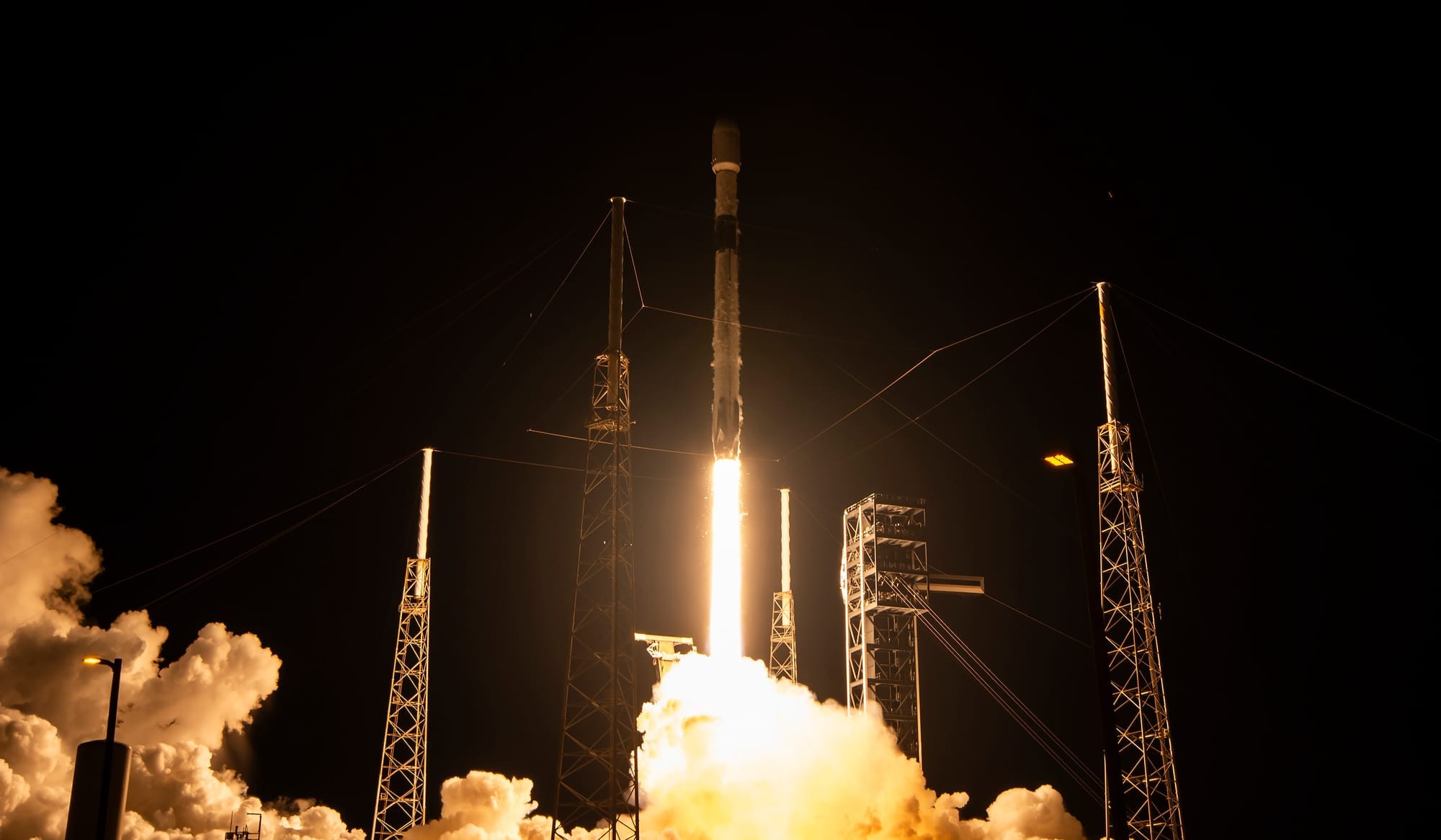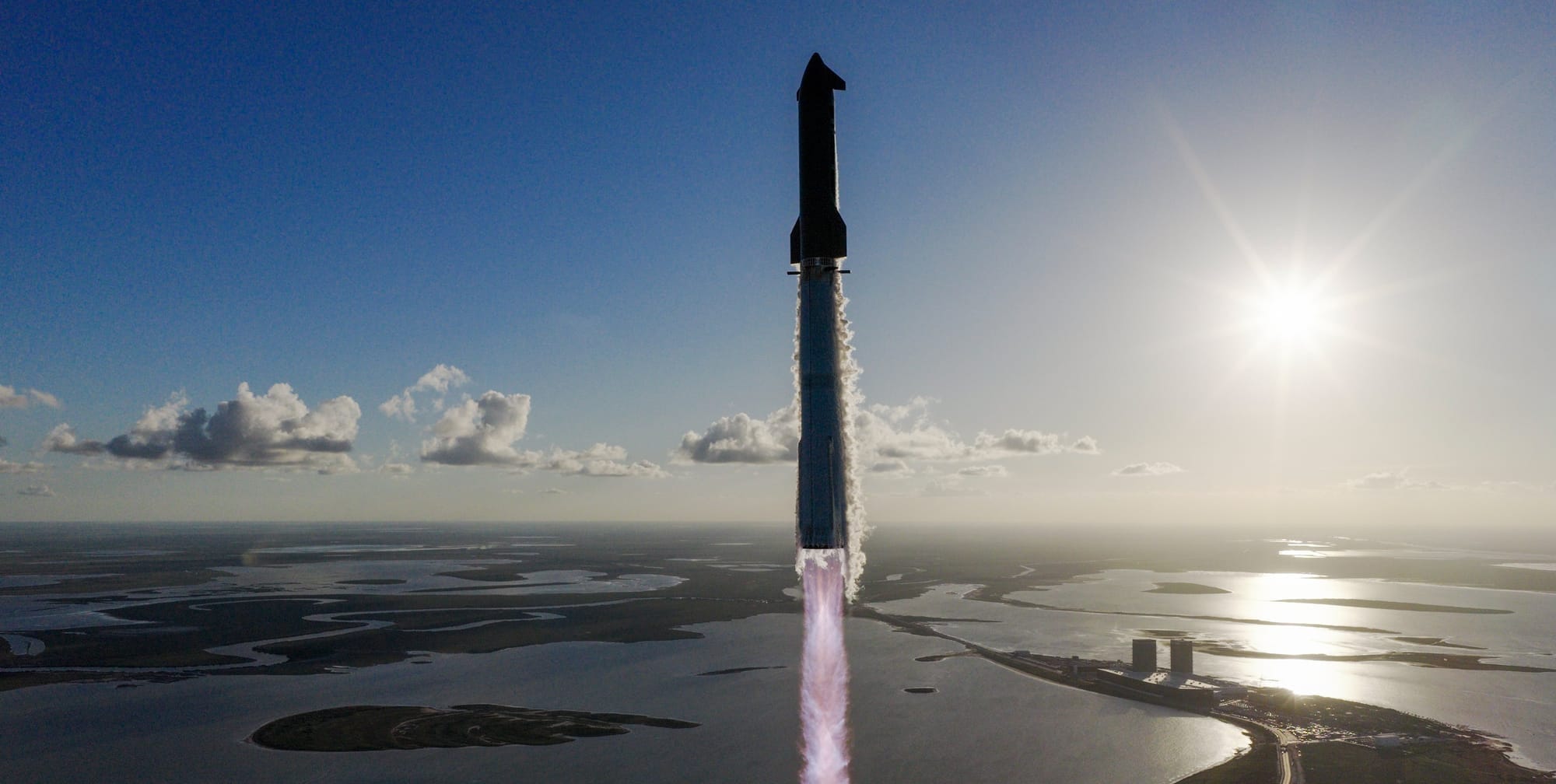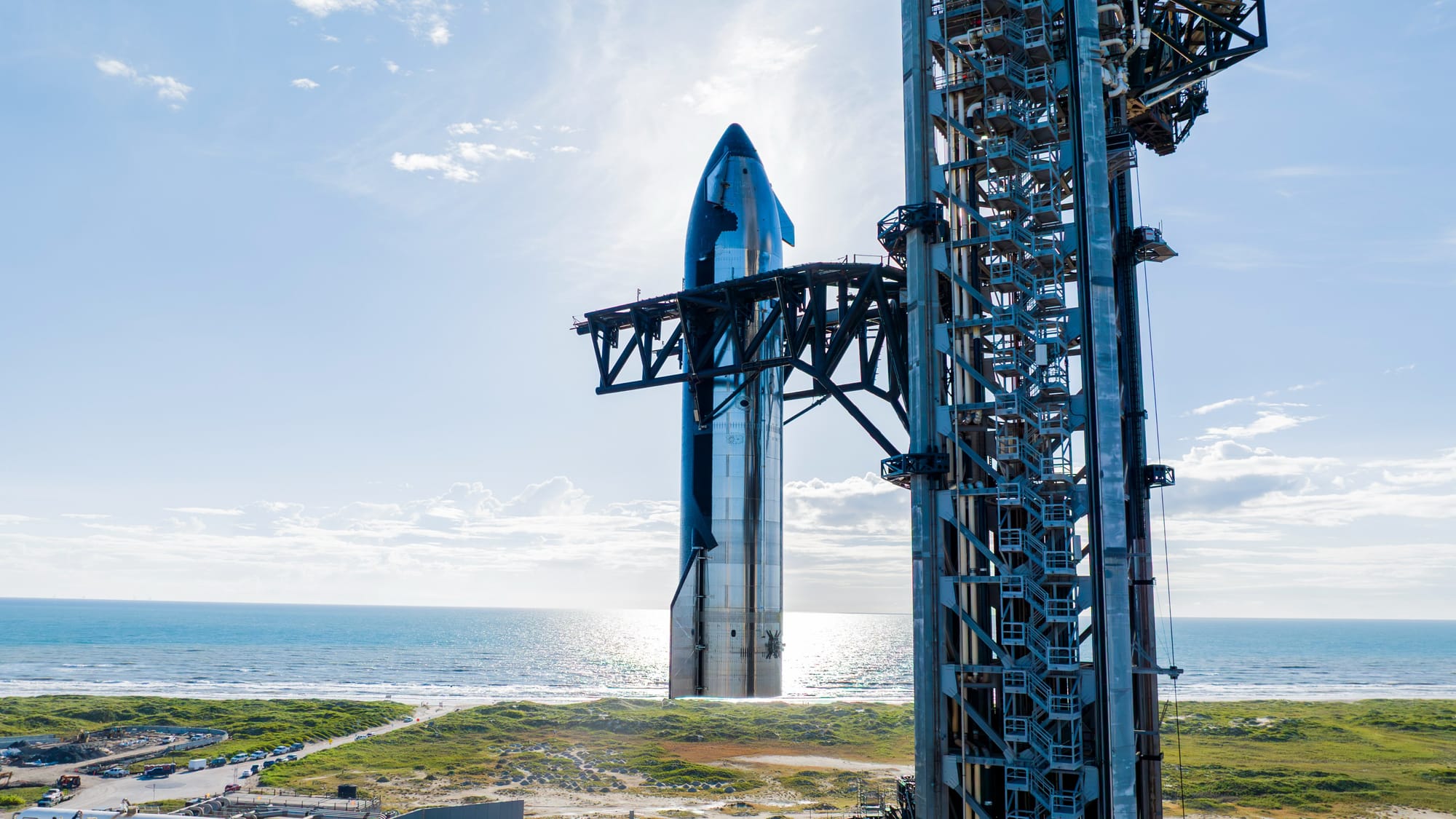Table of Contents
SpaceX is currently working toward the ninth flight test of its in-development fully reusable Starship-Super Heavy launch vehicle. This flight test is hoped to put development back on track for the 'Block 2' Starship upper-stage after two back-to-back, eerily similar, failures.
Following the failure of the eighth flight test, similar to the previous flight, SpaceX is conducting a length anomaly investigation. So far, the company believes the following is the root cause of the two failures:
"The most probable root cause for the loss of Starship was identified as a hardware failure in one of the upper stage’s center Raptor engines that resulted in inadvertent propellant mixing and ignition. Extensive ground testing has taken place since the flight test to better understand the failure, including more than 100 long-duration Raptor firings at SpaceX’s McGregor test facility."
"To address the issue on upcoming flights, engines on the Starship’s upper stage will receive additional preload on key joints, a new nitrogen purge system, and improvements to the propellant drain system. Future upgrades to Starship will introduce the Raptor 3 engine which will include additional reliability improvements to address the failure mechanism."
"While the failure manifested at a similar point in the flight timeline as Starship’s seventh flight test, it is worth noting that the failures are distinctly different. The mitigations put in place after Starship’s seventh flight test to address harmonic response and flammability of the ship’s attic section worked as designed prior to the failure on Flight 8."
An investigation into the eighth flight test is still ongoing, with the U.S. Federal Aviation Administration approving of mitigations in place for the ninth test flight. Additionally, larger and more numerous airspace closures are in place for this flight test.
SpaceX currently expects to fly the ninth flight test as soon as May 27th, utilizing Ship 35 and Booster 14, which is flying for a second time. Some details on the next flight test are as follows:
"The upcoming flight test marks the first launch of a flight-proven Super Heavy booster, which previously launched and returned on Starship’s seventh flight test. In addition to the reuse milestone, Super Heavy will fly a variety of experiments aimed at generating data to improve performance and reliability on future boosters. The Starship upper stage will repeat its suborbital trajectory and target objectives not reached on the previous two flight tests, including the first payload deployment from Starship and multiple reentry experiments geared towards returning the vehicle to the launch site for catch."
"After the conclusion of the boostback burn, the booster will attempt to fly at a higher angle of attack during its descent. By increasing the amount of atmospheric drag on the vehicle, a higher angle of attack can result in a lower descent speed which in turn requires less propellant for the initial landing burn. Getting real-world data on how the booster is able to control its flight at this higher angle of attack will contribute to improved performance on future vehicles, including the next generation of Super Heavy."
Meanwhile, Ship 35 is aiming to perform a full mission profile, not seen since flight six, and hopefully becoming the first 'Block 2' Starship upper-stage to do so. During a coast phase in space, Ship 35 will also attempt to deploy eight dummy Starlink satellites and perform an in-space Raptor engine relight.
As with the other eight flight tests, this mission will fly from Starbase, Texas, using SpaceX's only operational launch pad at its Starship test site.
If the ninth flight test is successful, flight ten could head into orbit, potentially for the first tower catch of a Starship.
2025 is a key year for the Starship program as a Ship-to-Ship propellant transfer is expected this year by NASA. Propellant transfer between two vehicles is critical for getting the Starship lunar lander out to the Moon, and returning American astronauts to the surface, for one mission, through the Artemis program.
What is Starship-Super Heavy?
Starship-Super Heavy is SpaceX's in-development fully reusable super heavy-lift launch vehicle and the largest rocket currently flying. SpaceX is currently aiming to have the launch vehicle deliver one-hundred and fifty tons to low Earth orbit while reused or two-hundred and fifty tons when expended, although there are rumors from SpaceX of an expendable payload capacity of three-hundred tons.
On the launch pad, Starship-Super Heavy is one-hundred and twenty-four meters tall and weighs 5,000,000 kilograms fully fuelled. The diameter of both vehicles is nine meters, excluding aerodynamic control surfaces.
What is Starship?
Starship is the second-stage of the Starship-Super Heavy launch vehicle and is planned to be capable of multiple missions into orbit, after a short refurbishment. The vehicle is fifty meters tall and nine meters in diameter, excluding its four aerodynamic control surfaces. Fully fuelled with liquid methane and liquid oyxgen Starship is believed to weigh 1,300,000 kilograms with an approximate weight of 100,000 kilograms unfuelled.
The Starship second-stage is powered by three sea-level Raptor engines along with three vacuum-optimized Raptor engines. These sea-level engines are believed to generate 230 tons of thrust each with the vacuum-optimized engines generating 258 tons of thrust each for a total combined 1,500 tons of thrust for Starship. The vacuum-optimized Raptors are unable to gimbal requiring the sea-level Raptors for control of the second-stage on ascent and landing.
In order to survive re-entry for reuse, Starship has several thousand thermal protection tiles on one side of the vehicle and on all four of its aerodynamic control surfaces. The four control surfaces help guide the vehicle during re-entry and prior to landing inside the atmosphere at a pre-determined location. Starship also has a series of small thrusters to control the vehicle in space before re-entry.
SpaceX is believed to be working on a few variants of Starship for use as a Moon lander, propellant tanker, space station, Mars lander, and as a crewed spacecraft.
What is Super Heavy?
Super Heavy, also called 'the Super Heavy booster', is the first-stage of SpaceX's Starship-Super Heavy launch vehicle. The giant Super Heavy first-stage is planned to be capable of multiple flights per day with minimal refurbishments and inspections. The vehicle is seventy-one meters tall and nine meters in diameter, excluding its four grid fins and chines. Fully fuelled with liquid methane and liquid oyxgen Super Heavy is believed to weigh 3,600,000 kilograms with an approximate mass of 200,000 kilograms unfuelled.
The Super Heavy first-stage is powered by thirty-three sea-level Raptor engines generating a combined thrust of 7,590 tons, with each engine generating 230 tons of thrust. The outer twenty Raptor engines are unable to gimbal with the inner thirteen being able to for control of the first-stage.
To enable the reuse of Super Heavy, the vehicle has four large grid fins placed in the interstage to assist in guiding and controlling during descent. Super Heavy also has four chines running along the lower third of it to generate lift and assist in stabilization.
Shortly after completing the ascent, Super Heavy relights ten engines, as three were running during staging, and performs a 'boost back' burn in order to return to the launch site. After the 'boost back' burn is completed the engines shut down with Super Heavy being guided by a series of small thrusters and its grid fins. Once Super Heavy is at the correct altitude above its landing location three engines start back up for the landing burn. SpaceX currently plans to have Super Heavy land back at the launch site, or at sea if a problem is detected during descent
Super Heavy also features a hot-staging ring atop of it to allow for a faster and simpler staging process, according to SpaceX. The hot-staging ring has dozens of gaps on the sides to allow for the Raptor engine exhaust of Starship to escape.






